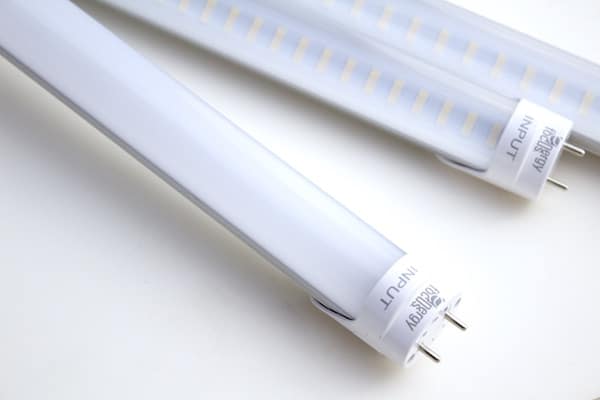Every day we flip a switch and turn on the lights. Suddenly, regardless of the time, season, or weather, we can hold meetings, perform surgery, and teach third graders. We evolved with natural sunlight, so quality of light affects our sleep, focus, moods, and more. We spend an incredible amount of time in artificial light given that our bodies are not really designed to live in it. Artificial (typically fluorescent) lighting has been so constant and ubiquitous in our schools, offices, and hospitals that we tend to forget how profoundly it affects us.
Developments in LED technology have vastly improved the quality of artificial light available for use, and one of the leading providers of and true pioneers behind this technology is Energy Focus. The Ohio-based company produces a large suite of LED products and researches the myriad of multifaceted benefits they provide, while also exploring the ways in which these developments interface with many other technologies. So it’s no surprise that in recent years, Energy Focus’s phone has been ringing off the hook with requests to use their products in renovations and retrofits of both academic and healthcare facilities.
PARTNERSHIPS FOR HEALTH AND WELL-BEING

PHOTO: COURTESY OF ENERGY FOCUS
The Center for Green Schools: The United States Green Building Council, responsible for LEED certification, is also home to the Center for Green Schools, which works to make schools healthier and more sustainable. In 2015, the Center introduced Energy Focus as its newest Green Apple Partner.
Energy Focus committed to donating 2.5 cents for every tubular LED product sold to the Center to further reinvest back in the schools. “We were drawn to the fact that they were doing really innovative work in LED technology and that they were interested in doing more work for schools,” says the USGBC’s Josh Lasky of why Energy Focus was an ideal partner for the program.
Energy Focus also donated new LED lighting for 50 special needs classrooms across the metro New York and tri-state area, as a part of an initiative called Change a Light, Change a Life.
Lasky says that high quality LEDs like Energy Focus’s Intellitube, which were used for the program, can do more than improve classroom aesthetics. They can improve learning environments, especially for students with special needs.

Many teachers at schools who have gone through Energy Focus lighting retrofits say they see a positive change in the attentiveness of their students. PHOTO: COURTESY OF ENERGY FOCUS
“Some special needs students are more light-sensitive, especially to the flicker that is often associated with fluorescents,” he says, noting that the company removes that flicker—something that not all other manufacturers do. “The lighting solutions Energy Focus put forward significantly alleviate that.”
E3 and the Big Sandy Independent School District: In 2014, Energy Focus products caught the eye of E3, a Texas-based contractor specializing in K-12 energy efficiency projects that reached out about using Energy Focus lights in a major retrofit in the Big Sandy Independent School District in Eastern Texas. “Two companies that want to do really high quality work came together and asked, ‘How can we do this better?’” says Tim Evans, vice president of E3, of the collaboration.
Evans also says that Energy Focus’s 200D Series LED tubes satisfied the budgetary goals of the school district. “Cost was a major component for Big Sandy. The LED’s use 15-18 watts per lamp as opposed to the 32-36 watts per lamp used by the fluorescents,” he explains. “So it saves the schools money and they get a good return on investment.”
Big Sandy staff members have also reported wellness-related benefits of the Energy Focus LEDs. “What we hear from teachers is, ‘I can’t explain it, but my kids are more attentive, especially in the afternoons,’” Evans says. “A lot of that goes back to circadian rhythms and how your body naturally responds to daylight. Because the LEDs resemble sunlight, students are more alert and pay more attention.”

Julie Marth (left), program manager for the Office for the Healthy Environment at Cleveland Clinic, watches a lighting demonstration from Mike Somers (center), regional sales manager at Energy Focus, showing the reduced energy usage of LED lights compared to other types of bulbs. PHOTO: COURTESY OF CLEVELAND CLINIC
The Cleveland Clinic: Academic Ohio hospital the Cleveland Clinic elected in August of last year to replace all of the lights across its hospitals, family health facilities, and administrative buildings with Energy Focus’s “Buy American” Tubular LEDs.
The installation is expected to result in energy savings of $2 million per year, and by the time it is completed, it will have replaced a whopping quarter of a million fluorescent bulbs with LED bulbs that will cast a softer, more natural light on patients and healthcare providers.
“LEDS allow us to use less energy, create a healthier environment inside our facilities, and save money,” says Jon Utech, director of the Cleveland Clinic’s Office for a Healthy Environment. “The lights were the best economic solution for us and also had local benefits. The vast majority of the tubes are being made locally. So it also benefits Cleveland, which is a manufacturing town.”
One of the pilots for the LED retrofit is at the Cleveland Clinic Children’s Center for Autism. Dr. Thomas Frazier, director of the Center, explains some of the health benefits seen so far: “At this point, the lighting is easier on the eyes of our staff, and as such I have to believe it has helped with aesthetics for our children,” he says. “While we don’t know this leads to decreased headaches, I would not be surprised if it did as the fluorescent lighting seemed to result in an increased incidence of headaches in staff and some children.”
![]()
CONNECT WITH ENERGY FOCUS:

